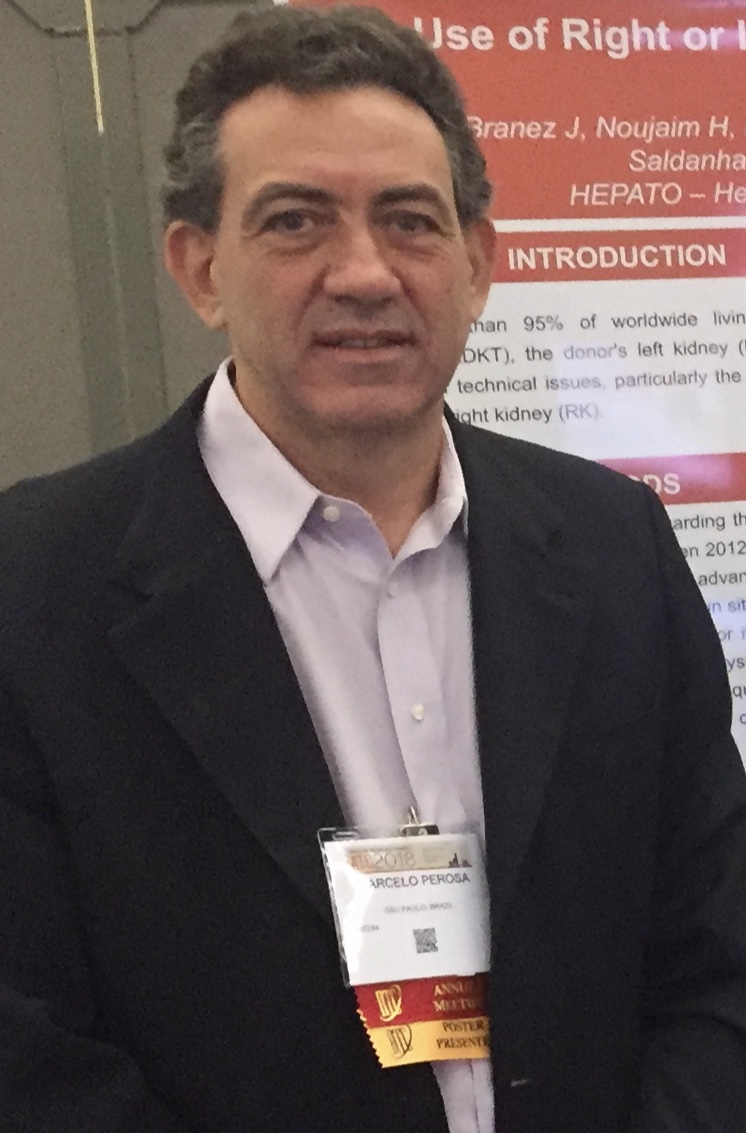
Transplant Surgeon and Director of Pancreas and Kidney Transplant Program - Leforte Hospital São Paulo - Brazil Largest Pancreas Transplant Program of Latin America with over 1000 PT performed Councillor of IPITA
Use of older donors in a high-volume pancreas transplant program
Marcelo Perosa1, Helena S Ganança2, Yasmin T Fernandes2, Amanda L Rezende2.
1Abdominal Organ Transplant, Leforte Hospital, São Paulo, Brazil; 2Medical School, University Sao Caetano Sul, São Paulo, Brazil
The use of older donor(OD) remains controversial among pancreas transplant(PT) programs. We reviewed our experience with the use of older pancreas donors in our 27-year program of PT.
We analyzed 1,065 PT from 1996 to 2021, being 514 SPK, 74 simultaneous pancreas and living-donor kidney(SPLK), 326 PAK and 151 PTA. A separate analysis was conducted for the 514 SPK and 551 solitary PT(S-PT)+SPLK. The primary end-points were1-year patient and graft survivals and technical graft failure. Secondary end-points were kidney delayed graft function(KDGF) and rate of reoperations. Older donors were defined as those aged > 40 years.
Overall, there were 89(8.3%) older donors, 64(11%) in the SPK group and 25(5.2%) among S-PT+SPLK group. As expected, donor age(43.2 x 26.2), KDPI(50.2 x 21.4) and cerebro-vascular accident(CVA) as cause of donor death(72% x 26.7%) were significantly higher in SPK/OD group(p<0.001). Donor hospital stay(6.5 x 5.5 days), donor acute kidney injury(53% x 41%), pancreas(11.8 x 11.1 hours) and kidney(10.1 x 10.5 h) cold ischemia time were similar between SPK/OD and SPK/Younger donors(YD) groups, respectively. Recipient age(36.5 x 36.2), time on dialysis(24.6 x 42.5 months) and preemptive transplants(23.4% x 18%) were also similar between SPK/OD and YD groups. 1-year death-censored(DC) kidney(92% x 94%) and pancreas(83% in both) survival, rate of kidney(1.6% x 2.1%) and pancreas(11% in both) technical failures, 1-year patient survival(83% in both) and KDGF(32% x 30%) were similar between SPK/OD and YD groups. Reoperation rate(54% x 31%) was higher in SPK/OD group(p=0.016).
Among S-PT+SPLK recipients, donor age(43.7 x 22.3) and the rate of CVA(61% x 18.4%) were significantly higher in OD group(p<0.001). Recipient age (37.2 x 36 y) and rate of retransplants(8% x 21.9%) were similar between OD and YD groups. 1-year patient(84% x 92%), DC-pancreas(71.4% x 72.4%) survival, technical failure(16% x 15.5%) and reoperations(24% x 22%) were similar between OD and YD groups, respectively.
Bladder drainage technique was significantly more used in OD compared to YD transplants both for SPK(32.8% x 21.4%, p=0.039) as S-PT+SPLK(72% x 35.7%,p<0.001). Use of OD was significantly more concentrated in the first 15 years than in the last decade of our program(p<0.001) both among SPK(75% x 25%) as in S-PT+SPLK(84% x 16%) groups.
Our results showed that the use of pancreas donor > 40 years, even having predominantly CVA as cause of death, did not impact patient and graft outcomes, but showed higher rate of reoperations in SPK patients. Our use of OD has significantly reduced over time and should be reconsidered given the current results.